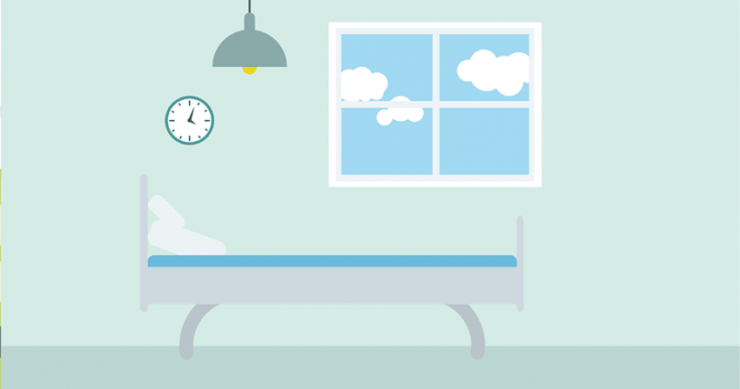The number of state institutional psychiatric beds, which were once the primary setting for psychiatric treatment, has gone down dramatically nationwide. Community psychiatric hospitals, private hospitals, and nursing facilities filled the gap in the 1980s and ’90s, but inpatient capacity in these settings, too, has recently been on the decline. There is widespread concern — given ample voice by the media — that we need to restore our nation’s psychiatric bed capacity, both to reduce the risk of violence perpetrated by people with untreated mental illness, and for their own safety and health.
In reality, however, inpatient treatment should form only one part of a robust system of mental health care. For comparison, note that treatment for even the most serious medical conditions now frequently occurs in outpatient and in-home settings. However, recent findings from the Healthcare Cost and Utilization Project reveal a widening gap between our country’s approaches to hospitalization for mental and for physical health conditions: Between 2005 and 2014, the rate of inpatient stays per 100,000 people for all causes decreased across all age groups, while the number of hospital stays for mental health/substance use actually increased by 12.2 percent.
To examine these trends and their implications, the National Association of State Mental Health Program Directors recently commissioned a series of working papers on the question: “What is the real need for inpatient psychiatric beds in the context of a best practice continuum of care?” In this series, researchers and policy leaders describe ways to improve mental health and substance use disorder treatment at many different points in a community’s system of care so as to necessitate fewer psychiatric hospitalizations, of shorter duration, with better and more equitable outcomes.
Increasing the number of psychiatric inpatient beds is not the solution in most communities. As my colleague Kevin Martone and I argue in our contributions to the series, investments in care and services can create alternatives to inpatient beds that are both more effective and less costly. “Beyond Beds: The Vital Role of a Full Continuum of Psychiatric Care” lays out specific public policy recommendations to minimize the human and economic costs associated with severe mental illness by building and invigorating a robust, interconnected, and evidence-based system of care. And as “The Role of Permanent Supportive Housing in Determining Psychiatric Inpatient Bed Capacity” shows, stable and affordable housing combined with voluntary services can contribute to improved outcomes in both physical and behavioral health, while reducing incarceration and homelessness. Furthermore, the cost of serving a person in supportive housing is half that of a shelter, a quarter that of incarceration, and one-tenth the cost of a state psychiatric hospital bed.
Advances in medical research and technology, chronic disease management programs, and alternative treatment settings such as walk-in urgent care centers — along with payment approaches that support medical care in outpatient settings — have all helped reduce hospitalizations for physical health conditions. Evidence-based mental health care options, especially when provided in the communities where people live, offer the potential to bring down psychiatric hospitalizations as well. Private insurers rarely cover these services, however, and state and federal mental health funding are drastically insufficient to meet demand. Medicare and Medicaid together fund approximately 60 percent of inpatient care in the United States. Unfortunately, Medicare funds very few evidence-based mental health practices, and Medicaid funding for housing transition and tenancy-sustaining programs — a critical component of permanent supportive housing for people with mental health disabilities — is not yet fully incorporated into services.
We don’t need to re-create massive numbers of psychiatric inpatient beds. Rather, policymakers must prioritize funding for the evidence-based preventive treatment and services that people with mental illness need and desire. With these effective and cost-saving resources available and truly accessible in every community, hospitalization will play an appropriate role in a balanced system.



